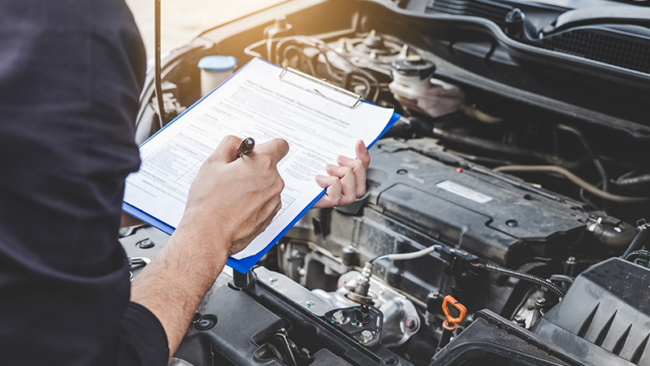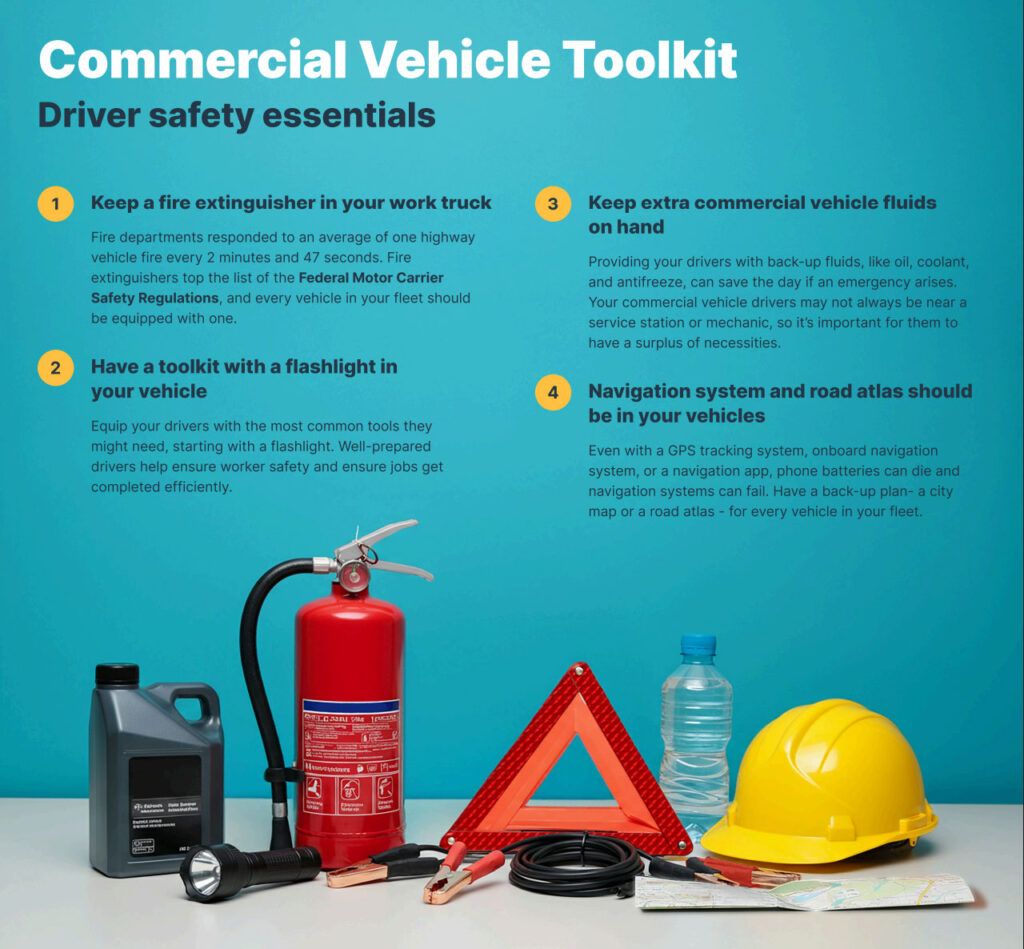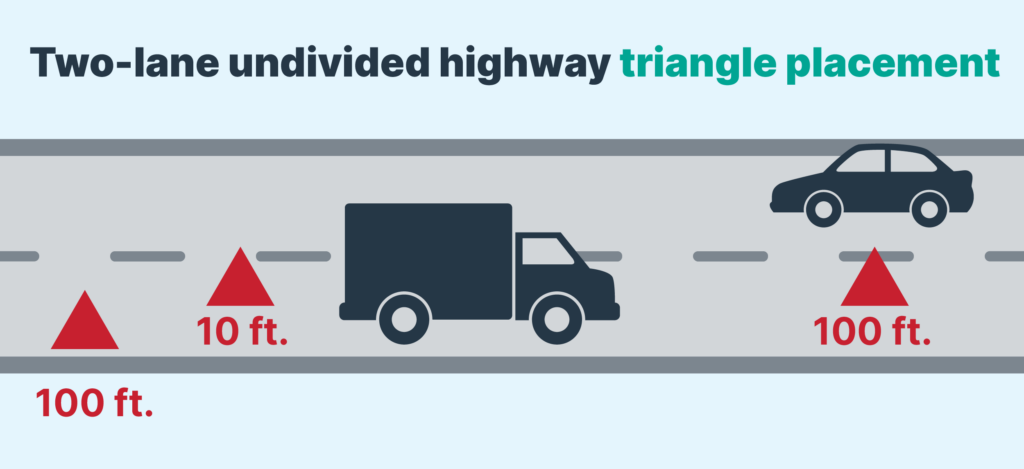Stay connected
Subscribe to our fleet blog and follow us on social media to receive all our fuel and energy industry insights.

Ever been stranded on a dark desert highway in your work truck? Then you know how important it is equip your truck with the right safety equipment. For small business owners and fleet managers who’ve tried to change a tire – without a flashlight – in a torrential downpour – on a roadside shoulder exactly half the width of a smart car – this list is for you. Here we’ll cover the safety items every driver should have on hand.

Use this toolkit to make sure you have fully equipped commercial vehicles to keep your drivers safe
Fire extinguishers top the list of the Federal Motor Carrier Safety Regulations. They are a crucial tool because fires tend to go undetected and unanticipated until it’s too late. According to the National Fire Protection Agency, in 2022 13% of all fires – 188,500 instances – were vehicle fires. “Fire departments responded to an average of one highway vehicle fire every 2 minutes and 47 seconds.” Don’t run the risk of your employees becoming a statistic. Fire extinguishers are inexpensive and easy to find. Equip every vehicle in your fleet, from service vehicles to sales vehicles with one.
This one’s obvious, but often overlooked. Nearly every driver has experienced the frustrations of not having the proper tool for a given situation. Therefore, equip your drivers with the most common tools they might need, starting with a flashlight. Avoid costly mistakes and wasted time and resources. Ensure your drivers are well-prepared and jobs get completed with utmost efficiency.
Providing your drivers with back-up fluids, like oil, coolant, and antifreeze, saves the day if an emergency arises. Your commercial vehicle drivers may not always be near a service station or mechanic, so it’s important to equip them with a surplus of necessities. If a warning light comes on, drivers simply replace any liquids they need, bypassing the need to search for a store, and eliminating the risk of running out.
Even in commercial vehicles without a GPS tracking system and/or onboard navigation system, your drivers probably use a navigation app on their cell phone. Even so, phone batteries die and navigation systems fail. It’s best to have a back-up plan in the form of a city map or a road atlas for every truck, van, or car in your fleet.
Jumper cables are great when there are other drivers nearby who are willing to lend a helping hand. But what about a dead battery on an empty highway? There are now lithium-ion powered jump starters with up to 80 jumpstarts in only one charge. Some models offer built-in extras like LED flashlights/warning lights and USB ports to charge a cell phone or laptop.
Reflective equipment, like emergency triangles and flares, warn other drivers of a vehicle emergency. The Federal Motor Safety Carrier Administration requires drivers follow certain placement protocols for warning devices on different types of roads. For two-lane, undivided highway, follow this protocol:

These items, in addition to high-visibility apparel, are critical for employees or drivers attending to a vehicle on the roadside. Make sure your emergency roadside kits contain these items.
If driving conditions are bad or if your workers are spending a great deal of time in rural or remote areas, they will be glad they have food, water, and a change of clothes. There are myriad situations that could cause a driver to be stranded. Taking every precaution is just good business sense for you and your employees.
If your work trucks carry any hazardous materials (i.e. pesticides, fuels, caustics, etc.), it is essential that your fleet adheres to all local and national transportation safety laws. Personal protective equipment, like eye protection, hard hats, and gloves, keep drivers safe from hazards on the road. A spill response kit is a must-have item in case of an accident or mechanical failure resulting in a hazardous material spill.
Adding these items to your work trucks may just help to protect your bottom line while keeping your employees safe and operational in the field.
WEX speaks the language of small business operators. Whether you’re looking to modernize your insight and reporting efforts, save on fuel costs or take advantage of the latest GPS tracking technologies, WEX offers solutions to simplify the business of running a business. To learn more about WEX, a dynamic and nimble global organization, please visit our About WEX page.
Resources:
U.S. Government Code of Federal Regulations
National Fire Protection Agency
Federal Motor Carrier Safety Administration
Editorial note: This article was originally published on March 27, 2019, and was updated for this publication.
Subscribe to our fleet blog and follow us on social media to receive all our fuel and energy industry insights.